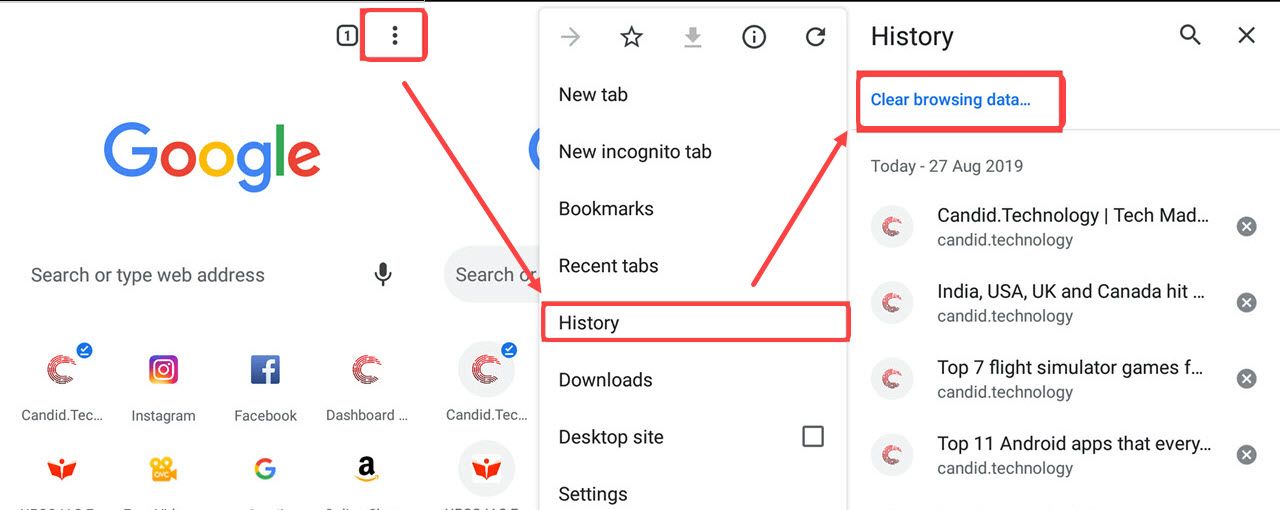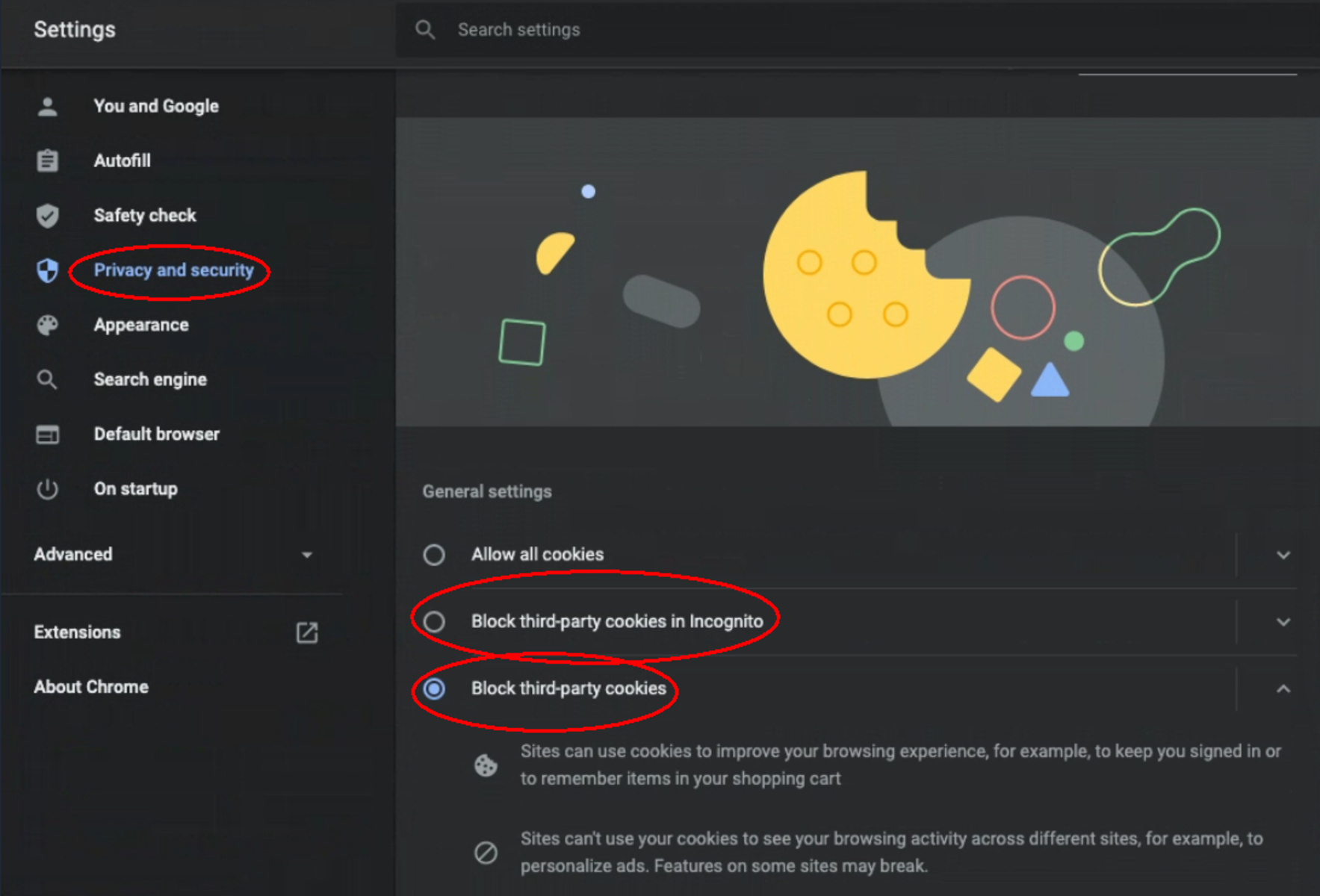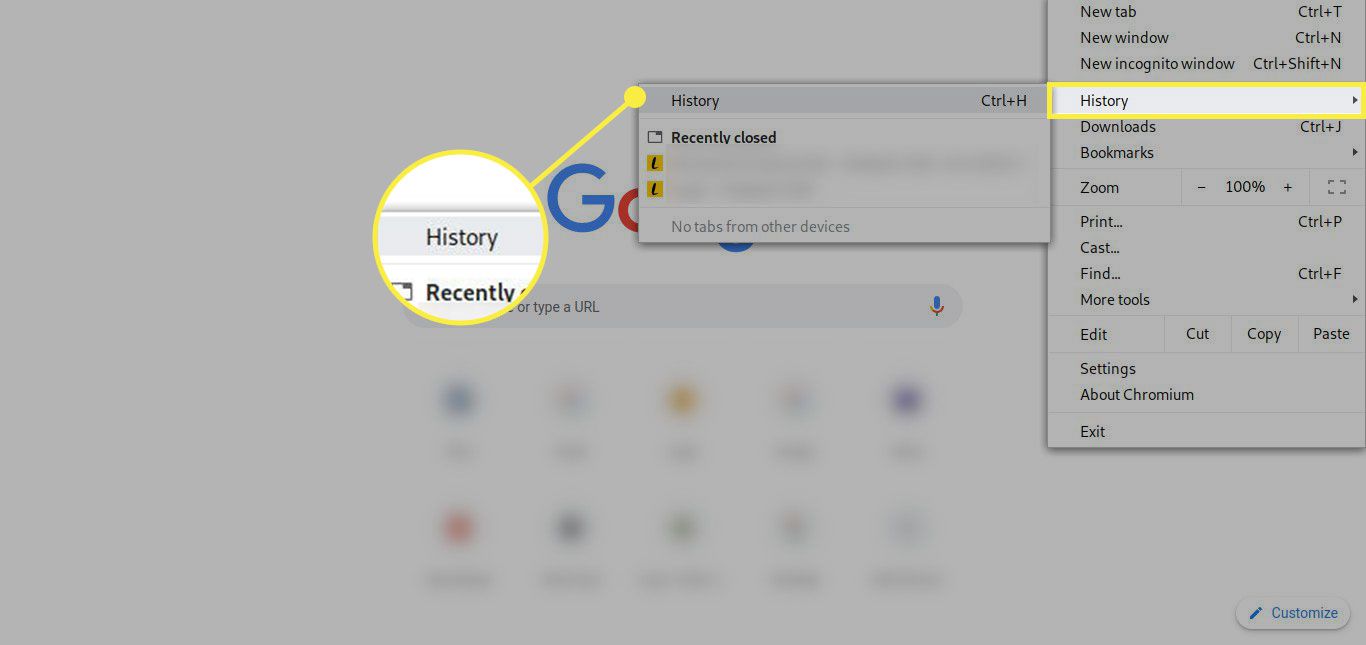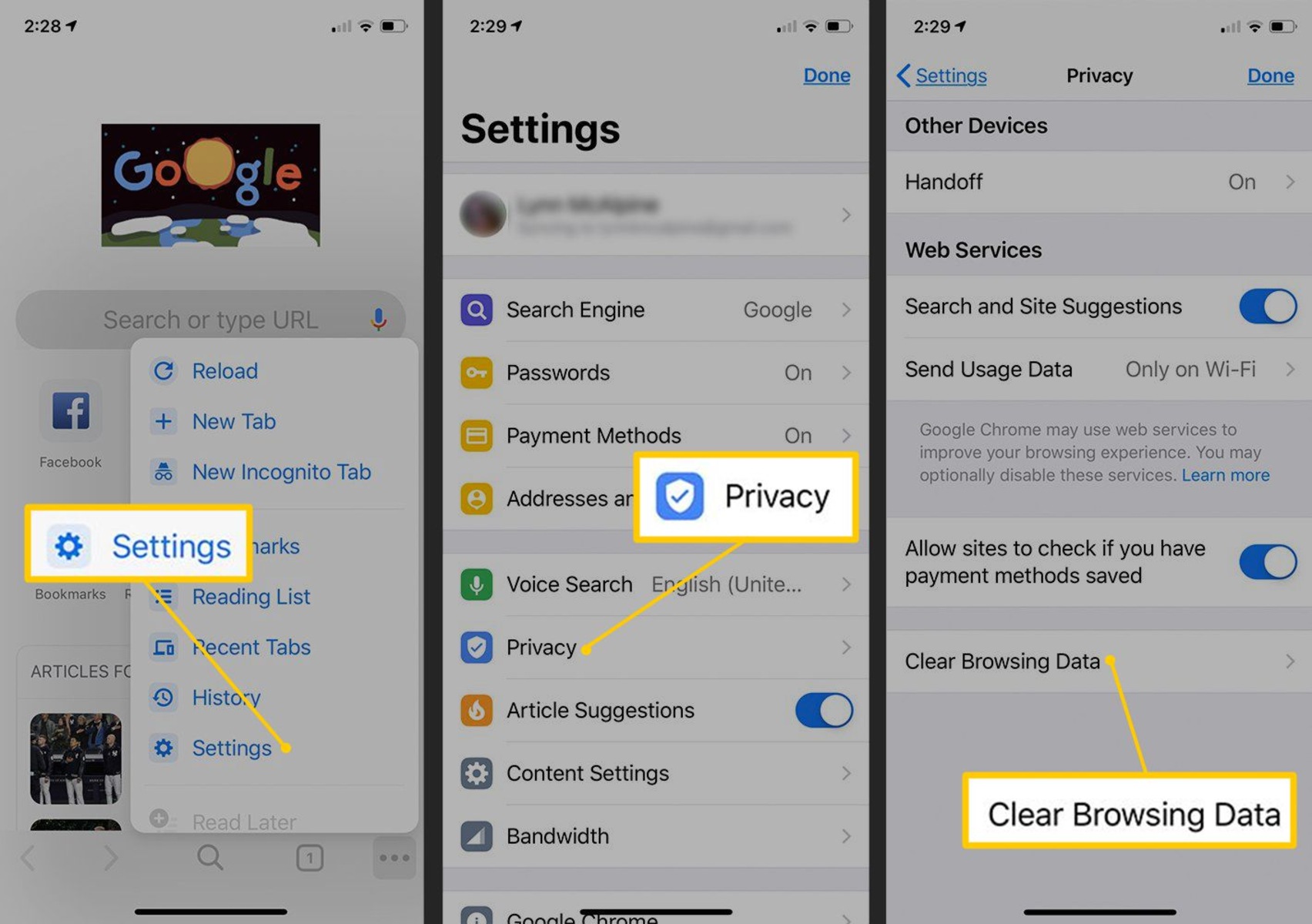Introduction
Clearing cookies in a web browser is a common troubleshooting technique used to resolve various issues, such as login problems, website errors, and privacy concerns. Cookies are small pieces of data stored by websites on a user's computer, containing information such as login credentials, site preferences, and browsing history. While cookies serve useful purposes, they can also cause issues when they become corrupted or outdated.
In this guide, we will focus on the process of clearing a specific cookie in Google Chrome, one of the most popular web browsers globally. By targeting a specific cookie, users can address issues related to a particular website without affecting their entire browsing history or stored data. This targeted approach provides a precise solution to cookie-related problems, ensuring a seamless and personalized browsing experience.
Whether you're encountering login issues on a specific website, experiencing unexpected behavior, or simply aiming to refresh the stored data for a particular site, knowing how to clear a specific cookie in Chrome can be invaluable. By following the steps outlined in this guide, you'll gain the knowledge and confidence to manage cookies effectively, empowering you to address website-specific issues with ease.
Now, let's delve into the step-by-step process of clearing a specific cookie in Chrome, leveraging the browser's built-in developer tools to target and remove the precise cookie causing the issue. This practical skill will equip you with the ability to troubleshoot website-related problems efficiently, enhancing your overall browsing experience.
Step 1: Open Chrome Developer Tools
To begin the process of clearing a specific cookie in Google Chrome, you'll need to access the browser's developer tools. These tools provide a comprehensive suite of features for web development, including the ability to inspect, debug, and modify the elements and behavior of web pages. By utilizing Chrome's developer tools, you can gain access to the underlying components of websites, including cookies, and effectively manage them to address specific issues.
Here's how to open Chrome Developer Tools:
-
Keyboard Shortcut: The quickest way to open Chrome Developer Tools is by using a keyboard shortcut. Simply press
Ctrl + Shift + Ion Windows or Linux, orCmd + Option + Ion macOS. This action will instantly launch the developer tools, allowing you to proceed with the cookie-clearing process without interrupting your browsing session. -
Right-Click Menu: Alternatively, you can access Chrome Developer Tools by right-clicking anywhere on a web page and selecting "Inspect" from the context menu. This action will open the developer tools in a separate panel, providing a visual interface for inspecting and modifying the page's elements and resources.
-
Menu Bar: For users who prefer navigating through menus, Chrome offers a straightforward method to access developer tools. Simply click on the three-dot menu icon in the top-right corner of the browser window, navigate to "More Tools," and then select "Developer Tools." This approach provides a convenient way to access the developer tools through the browser's menu system.
Upon successfully opening Chrome Developer Tools using any of the aforementioned methods, you'll gain access to a wealth of web development features, including the ability to inspect and manage cookies. With the developer tools interface at your disposal, you're now ready to proceed to the next step and navigate to the "Application" tab, where you can locate and manage specific cookies within the browser.
By mastering the skill of opening Chrome Developer Tools, you've taken the crucial first step toward effectively managing cookies and troubleshooting website-related issues with precision. This foundational knowledge will serve as the gateway to seamlessly navigating the developer tools interface and leveraging its powerful capabilities to enhance your browsing experience.
Step 2: Navigate to Application Tab
After successfully opening Chrome Developer Tools, the next step in the process of clearing a specific cookie in Google Chrome involves navigating to the "Application" tab within the developer tools interface. This tab serves as a comprehensive resource for managing various aspects of web applications, including cookies, local storage, and other site-specific data. By accessing the "Application" tab, users can gain insight into the stored information related to specific websites, allowing for targeted management and troubleshooting.
Here's a detailed guide on how to navigate to the "Application" tab within Chrome Developer Tools:
-
Locate the Developer Tools Interface: Upon opening Chrome Developer Tools using the preferred method, you'll be presented with a panel that showcases a range of tabs and features, including "Elements," "Console," "Sources," "Network," "Performance," "Memory," and more. These tabs represent different aspects of web development and provide valuable insights into the inner workings of web pages.
-
Select the "Application" Tab: Within the developer tools interface, locate and click on the "Application" tab. This action will transition the panel to display a variety of sub-tabs related to web application resources, such as "Frames," "Service Workers," "Cache Storage," "IndexedDB," "Web SQL," "Local Storage," "Session Storage," "Cookies," and "Application."
-
Explore the "Cookies" Section: Once you've accessed the "Application" tab, navigate to the "Cookies" section, which contains a comprehensive overview of the cookies stored by the websites you've visited. This section provides detailed information about each cookie, including its name, value, domain, path, expiration date, and more. By exploring the "Cookies" section, you can gain valuable insights into the specific cookies associated with individual websites.
By successfully navigating to the "Application" tab within Chrome Developer Tools and accessing the "Cookies" section, you've gained a comprehensive view of the stored cookies, setting the stage for the next crucial step: identifying and selecting the specific cookie that requires clearing. This targeted approach ensures that you can address website-specific issues with precision, without affecting the cookies associated with other sites or compromising your browsing data.
Mastering the skill of navigating the developer tools interface and accessing the "Application" tab empowers you to gain valuable insights into the stored data of web applications, enabling targeted management and troubleshooting. With this foundational knowledge, you're well-equipped to proceed to the next step and locate the specific cookie that requires removal, further enhancing your ability to address website-related issues effectively.
Step 3: Find and Select the Specific Cookie
Upon accessing the "Application" tab within Chrome Developer Tools and navigating to the "Cookies" section, you are presented with a comprehensive overview of the cookies stored by the websites you've visited. This section provides detailed information about each cookie, including its name, value, domain, path, expiration date, and more. Now, the crucial task at hand is to find and select the specific cookie that requires clearing, enabling you to address website-specific issues with precision.
Here's a detailed guide on how to find and select the specific cookie within Chrome Developer Tools:
-
Scan the List of Cookies: Begin by scanning the list of cookies displayed within the "Cookies" section. Each entry represents a unique cookie associated with a specific website, and the information provided includes the cookie's name, value, domain, path, expiration date, and other relevant details. Take your time to review the list thoroughly, identifying the cookie that corresponds to the website for which you are experiencing issues.
-
Utilize the Search Functionality: If the list of cookies is extensive or if you have a specific cookie name in mind, you can leverage the search functionality within Chrome Developer Tools. Simply use the search bar provided within the "Cookies" section to enter the name or partial name of the specific cookie you intend to clear. This targeted approach allows you to quickly locate the desired cookie within the list, streamlining the selection process.
-
Inspect Cookie Attributes: Once you've identified the cookie of interest, take advantage of the detailed attributes provided for each cookie entry. By inspecting the cookie's domain, path, and other relevant information, you can confirm that you have selected the correct cookie associated with the website in question. This careful examination ensures that you are targeting the precise cookie requiring removal, minimizing the risk of inadvertently affecting other site-specific data.
-
Select the Specific Cookie: With the target cookie identified, proceed to select it within the "Cookies" section of Chrome Developer Tools. This selection is a critical step in the process, as it signifies that you are ready to take action to clear the chosen cookie. By highlighting the specific cookie within the developer tools interface, you are poised to proceed to the final step of deleting the selected cookie, effectively resolving the website-related issue at hand.
By diligently finding and selecting the specific cookie within Chrome Developer Tools, you have honed in on the precise element that requires clearing, setting the stage for targeted troubleshooting and resolution. This focused approach ensures that you can address website-specific issues with accuracy, empowering you to maintain a seamless browsing experience while effectively managing site-specific data.
Step 4: Delete the Specific Cookie
Having successfully located and selected the specific cookie within Chrome Developer Tools, the final step in the process of clearing a specific cookie in Google Chrome involves deleting the chosen cookie. By removing the targeted cookie, you can effectively address website-specific issues and ensure a seamless browsing experience. This step-by-step guide will walk you through the process of deleting the specific cookie with precision and confidence.
Here's a detailed overview of how to delete the specific cookie within Chrome Developer Tools:
-
Initiate the Deletion Process: With the specific cookie selected within the "Cookies" section of Chrome Developer Tools, right-click on the chosen cookie entry to reveal a context menu of available actions. Among the options presented, locate and click on the "Delete" or "Clear" command, signaling your intent to remove the selected cookie from the browser's storage.
-
Confirm the Deletion: Upon selecting the "Delete" or "Clear" command, Chrome will prompt you to confirm the deletion of the chosen cookie. This confirmation dialog serves as a safeguard against accidental removal, ensuring that you are intentionally clearing the selected cookie. Verify your decision to proceed with the deletion by confirming the prompt, signaling your commitment to resolving the website-specific issue at hand.
-
Verify the Removal: After confirming the deletion, take a moment to verify that the specific cookie has been successfully removed from the browser's storage. Navigate back to the "Cookies" section within Chrome Developer Tools and ensure that the targeted cookie entry is no longer present. This verification step provides reassurance that the selected cookie has been effectively cleared, signaling the successful resolution of the website-related issue.
By following these steps to delete the specific cookie within Chrome Developer Tools, you have executed a targeted and precise action to address website-specific issues with confidence. This proactive approach empowers you to manage cookies effectively, ensuring a personalized and seamless browsing experience while troubleshooting and resolving site-specific issues.
Mastering the skill of deleting specific cookies within Chrome Developer Tools enhances your ability to maintain a tailored browsing experience while effectively managing site-specific data. With this foundational knowledge, you are well-equipped to navigate the intricacies of web development tools and leverage their capabilities to address website-related issues efficiently and confidently.
Conclusion
In conclusion, mastering the process of clearing a specific cookie in Google Chrome using the browser's developer tools empowers users to address website-specific issues with precision and confidence. By following the step-by-step guide outlined in this article, individuals can effectively manage cookies, troubleshoot website-related issues, and maintain a personalized browsing experience tailored to their preferences.
The ability to open Chrome Developer Tools seamlessly integrates users into the realm of web development, providing access to a wealth of features that extend beyond cookie management. From inspecting and modifying web page elements to analyzing network activity and debugging JavaScript, the developer tools interface serves as a versatile toolkit for enhancing the browsing experience and addressing a wide range of web-related challenges.
Navigating to the "Application" tab within Chrome Developer Tools grants users valuable insights into the stored data of web applications, including cookies, local storage, and other site-specific resources. This comprehensive view enables targeted management and troubleshooting, allowing individuals to address website-specific issues without impacting their entire browsing history or stored data.
By finding and selecting the specific cookie within Chrome Developer Tools, users can pinpoint the precise element that requires clearing, minimizing the risk of inadvertently affecting other site-specific data. Leveraging the search functionality and inspecting cookie attributes facilitate a focused approach to troubleshooting, ensuring that the correct cookie is targeted for removal.
The final step of deleting the specific cookie within Chrome Developer Tools represents a proactive and precise action to resolve website-specific issues. By removing the targeted cookie, users can effectively address login problems, unexpected behavior, and other site-related challenges, ultimately contributing to a seamless and tailored browsing experience.
In essence, the knowledge and proficiency gained in clearing a specific cookie in Google Chrome using developer tools empower users to take control of their browsing experience, troubleshoot website-related issues with accuracy, and maintain a personalized interaction with their favorite websites. This practical skill not only enhances the overall browsing experience but also equips individuals with the confidence to address and resolve site-specific challenges effectively.

























